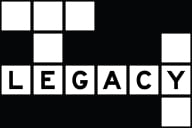You have /5 articles left.
Sign up for a free account or log in.
Most attention is paid at institutions of higher education to the beginning and end of undergraduate studies. Curriculum committees debate the nature and number of requirements that students must fulfill, mostly in their freshman year; and departments spend a great deal of time evaluating the content and structure of majors, which tend to occupy students in their junior and senior years. No one gives much thought to what students do in the middle, when they're generally encouraged to explore whatever topics they wish.
The principal philosophy that governs this middle period of a student's education is of course the elective system. The right for all students to take a class on the subject of their choosing is a hallmark and admirable feature of the American university. It is often through such chance encounters with less common subjects that scholarly passions are born and majors are chosen. No one studies linguistics or anthropology in high school.
But because the elective system is so fundamental to higher education, and because the major is under departmental control, we rarely step back and ask whether this combination of general ed requirements, electives, and specialization actually meets the objectives of a liberal education. Of course, the answer to this question depends largely on how one defines liberal education. For the sake of argument, let’s take the definition offered in the 2009 Modern Language Association Report to the Teagle Foundation on the Undergraduate Major in Language and Literature. This report identified the acquisition of broad, cross-disciplinary and transhistorical "literacy" as a central component of liberal education (scientific literacy would be another component, but that’s a different story). In other words, students should be sufficiently well versed in an array of humanistic fields, canons, methodologies, and periods, for them to engage with sources (and pursue further research, if they wish) in a large number of areas. To be sure, we expect a lot more from liberal education than this single aim; this is simply a minimalist definition.
Given this definition, it seems fair to say that we place blind faith in the academic virtues of our current system. We simply assume that somewhere along the way, between fulfilling their general education and major requirements, students will pick up enough knowledge about other fields to meet the demands of a liberal education.
It is easy to understand why we place such faith in this system, since there is no obvious, acceptable alternative. Institutions such as St. John’s College, whose curricula are set in stone, will only ever cater to a tiny minority of students; even Columbia University’s two-year core curriculum is highly exceptional. As Louis Menand recently noted in The Marketplace of Ideas, it is virtually impossible to imagine introducing a curriculum such as Columbia’s core today; such highly regimented courses could only evolve under particular historical circumstances. The vast majority of students today desire a greater say about the content of their education. And we must honor this desire, if only because students who do not buy into their educational program are unlikely to be good learners.
There are other ways, however, to think about the middle part of undergraduate education, particularly in the humanities. Let us focus momentarily on students who major in the humanities. Whether students chose to major in English, religious studies, anthropology, or history, there are in fact no structures in place to encourage or enable them to acquire a solid foundation in other disciplines, cultures, literatures, and historical periods. The student writing her honors thesis on Alexander Pope often does not know who Pope Alexander VI was.
Moving now to all undergraduates, I would push this argument even further. Why is it that the vast majority of humanities courses are taught as if we were training students to professionalize in a given field (say, French), when only a tiny fraction of these students – non-majors and majors alike – are actually going to pursue a graduate degree in the field? Whether a student is majoring in engineering and taking a French class out of a love for French literature, or whether she’s a French major and is required to take a French class, chances are that she is not going to become a professor of French. And yet our humanities majors, and our undergraduate curricula more broadly, are designed to produce budding experts in fairly narrow fields. This design is understandable in fields such as economics or engineering, where students often do go on to take jobs in which they need specific skills and knowledge. But why is it so in the humanities?
To be sure, specialization, even at the undergraduate level, has its virtues: engaging with material at a higher level of expertise allows students to hone their research skills and to produce more consequential bodies of work (such an honors thesis). Still, I would ask whether our primary objective, as humanities professors, should be training students as though they will all go on to become scholars, or whether our primary objective shouldn’t be something else – such as offering all undergraduate students a broader and less discipline-focused foundation for their future lives.
This issue seems particularly pressing today, as the humanities have gone from facing an existential crisis, to literally fighting for their existence. If smaller departments (such as those that were just axed at the State University of New York at Albany) continue to justify their academic purpose chiefly in terms of number of majors, then they will perennially fear (and often face) the chopping block. Admittedly, such a change would also require a shift in perspective on the part of the administrative powers-that-be. But if humanists made a stronger case that the chief purpose of a liberal education is not disciplinary specialization, but broad historical and cultural literacy, then universities simply could not make do without Greek epics, French classical theater, German philosophy, or Russian novels.
What would a curriculum reconfigured along these lines look like? One option would be for humanities departments to join forces to offer genuinely interdisciplinary core courses on major topics of interest. An art historian could team up with a literature professor and religious studies scholar to teach a course on the Renaissance; a historian, political theorist, and Spanish professor could offer a course on the discovery of the New World; or a philosopher, psychologist, and musicologist could lead a course on Modernism. These courses, which would need to be vetted by appropriate faculty committees, would stem from faculty interest, and could vary over time.
This curricular structure presents a number of advantages over the existing one. First, by virtue of having courses team-taught and not placed under the auspices of a single department, they would not have a narrow disciplinary focus, but would open up key events or questions to a variety of approaches. (This is currently the structure adopted at Stanford for the fall Introduction to the Humanities courses.) At the same time, professors could underscore the methodological differences between their disciplines, thereby providing students with a roadmap of how knowledge is divided between the various academic departments (and where to look for classes in the future).
Secondly, by requiring these courses to cover broad topics, they would collectively constitute an overarching panorama of the humanities. This would be a disjointed panorama, to be sure, yet that might be a quality, since it would avoid the problems associated with establishing a grand récit. If this panorama resembles an exploded version of an ideal, inaccessible core curriculum (“These fragments I have shored against my ruins”?), this is ultimately a misleading resemblance. Since the various pieces of this series would constantly be changing, it is not a palliative for a "Great Books" curriculum, in an age that has turned against such courses, but rather the product of a different pedagogical philosophy. Rather than valuing certain specific texts more than others, this philosophy places value on the breadth of knowledge, and the ability to synthesize very different forms and genres of information, from plays and paintings to maps and graphs.
The truly thorny issue that every curricular reform faces is that of requirements. If we build a new program, will anyone come, if they’re not obliged to? One option would be to require students to take, say, two or three of such courses at some point during their studies. This arrangement grants students a degree of choice and a good deal of scheduling flexibility. Other incentives could be found to encourage students to take more than the bare minimum of courses: completion of additional courses could lead to some sort of certification, or could form part of an honors program.
Since a central objective of a liberal education is to ensure breadth of knowledge, it follows, to my mind at least, that a significant humanities requirement is needed. In cases where this is impossible for pragmatic or philosophical reasons, I would argue that it is still important to provide students with a curricular structure that would allow them to achieve the goals of a liberal education on their own. This is particularly true for non-humanities majors, who often do not venture into humanities classrooms, not necessarily due to a lack of interest, but because of the highly specialized focus of most courses. They also may simply not know where to look: our courses are not listed in a central place, but buried behind individual department nomenclatures.
Our academic divisions may make sense for research purposes, but are often at odds with our pedagogical goals. The MLA Report to the Teagle Foundation identified four “constitutional elements” that it considered key to liberal education – "a coherent program of study, collaborative teamwork among faculty members, interdepartmental cooperative teaching, and the adoption of outcome measurements" – yet the first three of these four elements cannot be achieved at the departmental level alone. To fulfill the promise of liberal education, we must ensure that students can build “coherent programs of study” that cut across disciplines.
Finally, perhaps we should have more confidence in the wares we’re vending. Wide-ranging courses that combine powerful texts, vivid iconic material, controversial ideas, and dramatic historical episodes, with insightful analysis should not fail to exhilarate students. Of course, good professors, catchy titles, and intriguing perspectives are also needed to invigorate the study of our disciplines; a dry "introduction to X" approach will never be sufficient to meet the goals of a liberal education. But there is also a real thirst for this kind of knowledge, and not only among students in the humanities. Who knows? Maybe if we build it, they will come.








